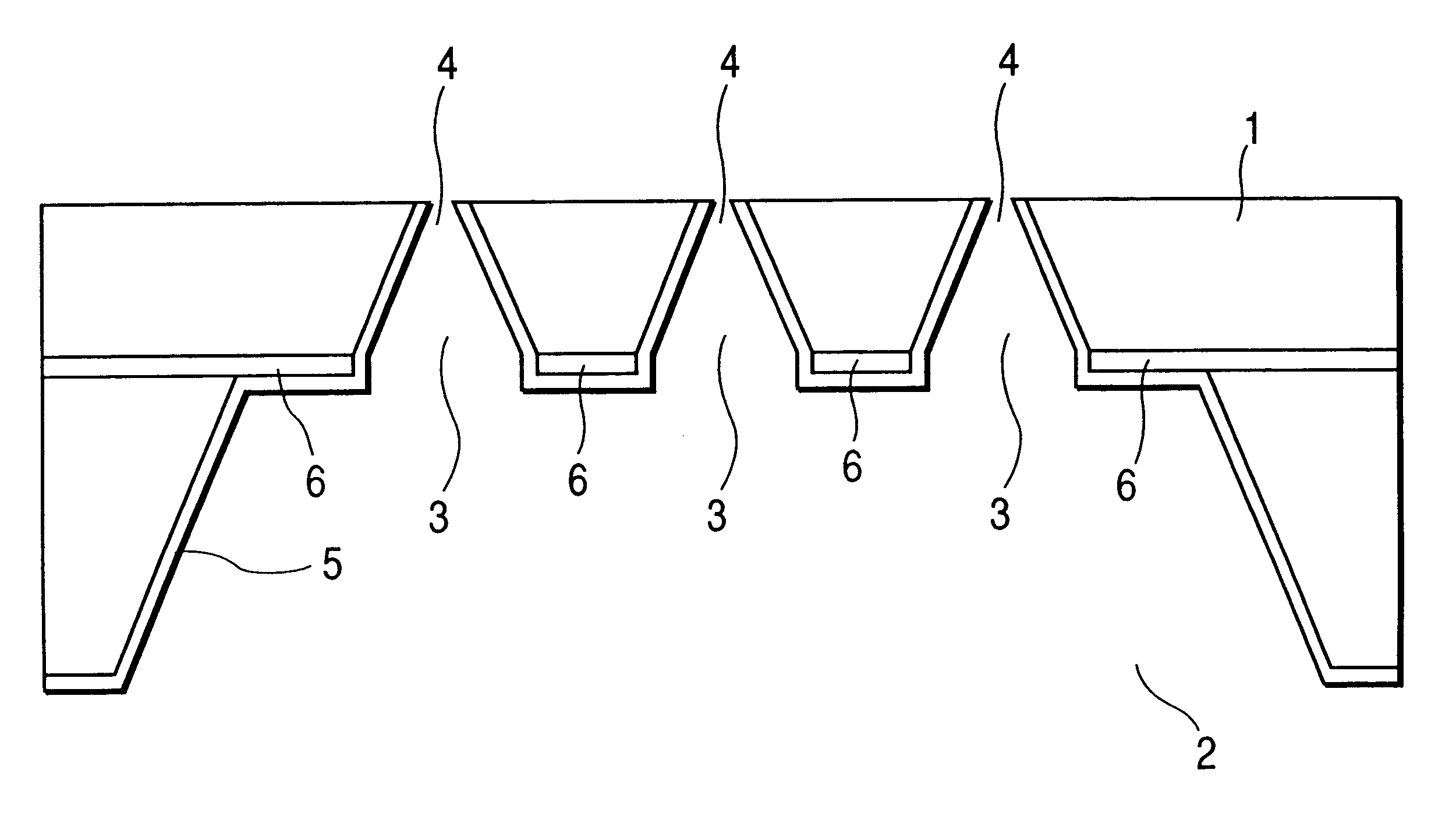Optical probe for detecting or irradiating light and near-field optical microscope having such probe and manufacturing method of such probe
a manufacturing method and optical probe technology, applied in the direction of scanning probe techniques, instruments, material analysis through optical means, etc., can solve the problems of degrading the resolution of the microscope, difficult to produce a plurality of fine optical probes in an integrated fashion, and difficult to arrange a plurality of optical probes in an array
- Summary
- Abstract
- Description
- Claims
- Application Information
AI Technical Summary
Problems solved by technology
Method used
Image
Examples
example 2
In Example 2, a total of 100 micro-apertures arranged in a 10.times.10 matrix were prepared for optical probes as described above by referring to Example 1. The micro-apertures were observed through a scanning electron microscope to find that their diameters were between 10 and 30 nm. The surface of the substrate were etched uniformly by forming silicon dioxide on the substrate surface, using oxidizing gas, and sacrificially etching the silicon dioxide by means of hydrofluoric acid solution.
example 3
In Example 3, an optical probe unit having light irradiating means was prepared in a manner as described below.
FIG. 4 is a schematic cross sectional view of part of an information recording apparatus according to the invention and having a plurality of micro-apertures for so many optical probes provided with respective light irradiating means. The optical probe unit was used as optical recording head of an opto-magnetic recording system. Referring to FIG. 4, reference numerals 701, 702 and 703 denote probes #1, #2 and #3 respectively comprising micro-apertures the same as those prepared in Example 1 above. Laser beams 711, 712 and 713 emitted from respective surface light emitting lasers 721, 722, 723 of a surface light emitting laser array 720 arranged on a single substrate and fitted to the recess of the optical probe unit as light irradiating means seep out from respective probes #1, #2 and #3 as evanescent lights #1 (741), #2 (742) and #3 (743). Partitions 724 were arranged betw...
example 4
This example represents a second mode of carrying out the method of manufacturing optical probes according to the invention. FIGS. 5A through 5G are schematic cross sectional views of optical probes being prepared by the second mode of carrying out the invention, showing different manufacturing steps.
The manufacturing process of this example will be described below.
A pattern of photoresist 32 as shown in FIG. 5A was formed on a 525 .mu.m thick silicon substrate 31 having a planar orientation of plane and a resistivity of 1 to 10 .OMEGA.cm by using a photolithography process. The pattern had a size of 20 .mu.m square.
Then, phosphor (P) ions were implanted into the surface of the silicon substrate by means of an ion implanter, using the photoresist 32 as mask. After removing the photoresist, an n-type diffusion layer having an impurity concentration of 1.times.10.sup.18 cm.sup.-3 was formed for the etching stop layer 26 by thermal diffusion (FIG. 5B).
A pn-junction was formed on the in...
PUM
| Property | Measurement | Unit |
|---|---|---|
| diameter | aaaaa | aaaaa |
| size | aaaaa | aaaaa |
| size | aaaaa | aaaaa |
Abstract
Description
Claims
Application Information
 Login to View More
Login to View More - R&D
- Intellectual Property
- Life Sciences
- Materials
- Tech Scout
- Unparalleled Data Quality
- Higher Quality Content
- 60% Fewer Hallucinations
Browse by: Latest US Patents, China's latest patents, Technical Efficacy Thesaurus, Application Domain, Technology Topic, Popular Technical Reports.
© 2025 PatSnap. All rights reserved.Legal|Privacy policy|Modern Slavery Act Transparency Statement|Sitemap|About US| Contact US: help@patsnap.com



